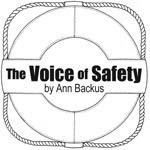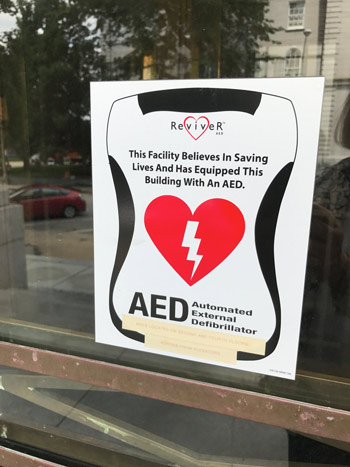Life Saving Technique Easy and Available

This week I will renew my CPR/AED (cardiopulmonary resuscitation-automated external defibrillator) certification in a three-hour course given by the American Heart Association. We are including teenagers in this certification session as a component of a program I am running at my workplace, the Harvard Chan School of Public Health.
There are three key points in this article: 1) there should be several people in each community who can administer CPR and can use the defibrillator, 2) teens should be included in trainings as they are old enough to have a role in emergency response in our communities, and 3) many of the harbors in Maine and New Hampshire now have AEDs mounted to dockside or co-op buildings.
As a person interested in safety and health in general, I think it is important for me to be able to help someone in crisis. Fishermen, as a group, have a long history of Good Samaritan acts on the water. In addition to being able to dewater or tow a boat to safety, it would be great if some of the fishermen were ready Samaritans in terms of first aid and CPR as well.
Many who have taken a drill instructor course, or who have been in the lobstermen’s apprentice program already have training. But perhaps there are others of you who would like to have it.

Common sign placed on buildings indicating an Automated External Defibrilltor (AED) is available in the building. Ann Backus photo
Call me (603-361-2141) if you would like me to help organize a training for your community.
In terms of teens, as a program director who has provided CPR/AED training to teens for four years, I find teens experience an increased sense of responsibility and of purpose once they have their certification cards. By providing teens with life-saving skills, we show interest in them as future adults and give them a sense that even before they are adults, they can contribute to the well-being of a community.
Is there an AED unit where you land fish?
Many of the commercial fishing docks and lobster co-ops now have an AED unit in an obvious location such as on the outside of the Co-op office. Whether placed by the harbor master or the community’s health officer, there may have been training offered at the time the unit was installed. However, an important point to make here is that ANYONE CAN USE THESE UNITS CORRECTLY – without the training.
After the unit is turned on, a series of voice instructions walk you through how to hitch up and use the machine.
Several years ago, I read in the 2014 Annual Report of Friendship, Maine that the Friendship Ambulance Auxilliary Foundation Report and the Health Office’s Report each mentioned that AED units had been placed at Bramhall’s Lobster Co-op, the Heritage Lobster Co-op, Benner’s wharf, and at the local store – Archie’s.
I went in search of these units and found three of the four of them. Housed in weather-proof cabinets, each unit included an informative note about the availability of training, a statement saying “any one can operate these units” – i.e., that is training is not required, some basic instructions, and a reminder that when one is unconscious and in cardiac arrest, a quick response with an AED could save a life, and several contact numbers.
How to proceed with CPR or an AED
To use a defibrillator when someone is unconscious or has collapsed, take the unit in its case to the patient. Check the pulse and breathing, try to arouse the person, by shaking him or her (don’t shake children or infants) and calling his/her name. Meanwhile ask if anyone knows CPR, and if “yes” start CPR. Send someone else to call 911.
If breathing and/or pulse is not present or irregular, prepare to use the AED. A waterfront location may be wet, be sure the person is on dry ground. Turn the AED on and follow the voice prompts and displayed instructions. Attach the two electrodes to bare, DRY, chest as indicated, first removing chest hair (with the scissors) and any metal such as piercings or an underwire bra (scissors again). Work quickly. Quickly check for implanted devices such as pacemaker and for a medical alert bracelet.
Have all present move back, then press the “analyze” button. The AED will automatically analyze the person’s heart rhythm and determine if a shock is needed. Should a shock be needed, the AED will instruct that all stand back and not touch the patient. At this point press “shock” and watch the person’s response.
Keep an eye out for AED units as you go from place to place and encourage your community to install one or more and to offer trainings. Should you need one, knowing their whereabouts could save someone’s life. Here is a helpful website https://www.nhlbi.nih.gov/health/health-topics/topics/aed/howtouse.
Ann Backus, MS is an Instructor in Occupational Health at Harvard School of Public Health, 665 Huntington Ave., Boston MA 02115, 617-432-3327, abackus@hohp.harvard.edu.
